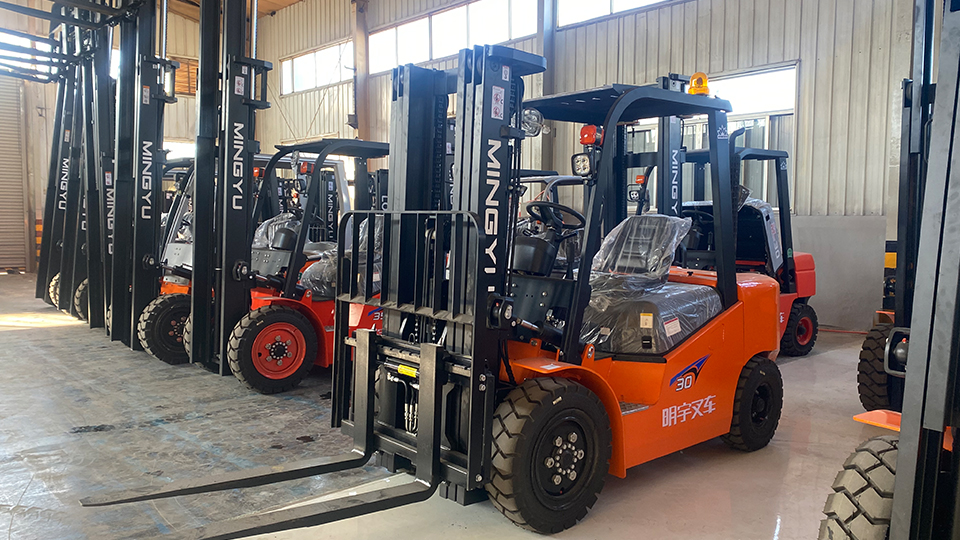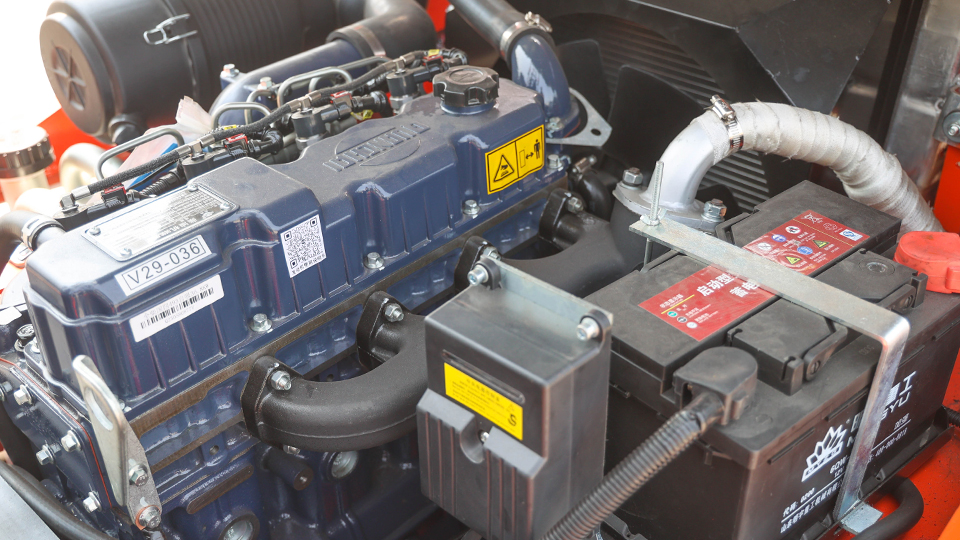
I. Introduction: The Criticality of "Unattended"
The operation of Powered Industrial Trucks (PITs), most commonly forklifts, is governed by stringent safety protocols designed to mitigate catastrophic workplace accidents. A common point of confusion, and a frequent area of regulatory violation, is the practice of leaving a forklift engine running while the operator is dismounted. The critical question, "Can you leave a forklift running unattended?", is not answered with a simple "yes" or "no," but rather by a precise legal and technical definition of the term "unattended."
This article will perform a technical analysis of the legal, safety, and operational considerations surrounding an unattended forklift with the engine running. We will primarily reference the regulations established by the U.S. Occupational Safety and Health Administration (OSHA), specifically Standard 29 CFR 1910.178, which governs Powered Industrial Trucks. The conclusion will clearly delineate the narrow circumstances under which a running engine is permitted and, more importantly, the overwhelming technical and legal mandate for engine shutdown.

II. The OSHA Definition: Distinguishing "Attended" from "Unattended"
Under OSHA regulations, a single, clear definition is used to classify a forklift's status, which then dictates the required shutdown procedures.
The "Unattended" Classification
A powered industrial truck is classified as "unattended" in two distinct scenarios:
When the operator is 25 feet or more away from the vehicle, even if the vehicle remains in the operator's view.
Whenever the operator leaves the vehicle and it is not in their view, regardless of the distance.
The "Attended" (or Dismounted-But-Near) Classification
A forklift is considered "attended" (or more accurately, in a dismounted-but-near state) when the operator is dismounted, still in view of the truck, and is positioned less than 25 feet away from the vehicle.
This 25-foot rule is a non-negotiable threshold that dictates the mandatory shutdown procedure.
III. The Technical and Legal Mandates for Engine Shutdown
The core regulation is found in 29 CFR 1910.178(m)(5)(i), which states the requirements for an "unattended" truck.
The Full Unattended (Engine OFF) Protocol
When a forklift meets the definition of "unattended" (more than 25 feet away OR out of view), the following sequence of mandatory actions must be executed:
Load Engaging Means Fully Lowered: The forks, platform, or other load-engaging attachment must be brought to rest completely on the floor or ground. This removes the major overhead hazard and stabilizes the vehicle.
Controls Neutralized: The direction and lift controls must be placed in their neutral position.
Brakes Set: The parking brake must be fully engaged to prevent unintentional movement.
Power Must Be Shut Off (Engine OFF): This is the crucial step. The ignition must be turned off, and the key should be removed and secured by the operator.
Wheels Blocked: If the truck is parked on any incline (grade), the wheels must be physically blocked (chocked) in addition to setting the brake.
The Dismounted-But-Near (Engine ON) Exception
The regulations provide a narrow exception for the engine to remain running. According to 29 CFR 1910.178(m)(5)(iii), the power (engine) is not required to be shut off if all of the following conditions are met:
The operator is dismounted from the vehicle.
The operator is within 25 feet of the vehicle.
The vehicle remains in the operator's view.
In this specific, tightly controlled scenario, the engine may remain running, but the operator must still complete the other three critical safety steps: the load engaging means (forks) must be fully lowered, controls must be neutralized, and the brakes must be set.
IV. Technical and Safety Justifications for the Shutdown Protocol
The OSHA standards are not arbitrary; they are the result of extensive analysis into accident causation. Leaving a forklift running and unsecured introduces several high-consequence hazards.
A. Risk of Unauthorized Operation and Misuse
The primary risk of leaving the engine running and the key in the ignition is the potential for unauthorized personnel to operate the machine. Forklifts are not standard vehicles; they require specialized training and certification. An untrained employee or even a passerby attempting to move the truck can lead to:
Loss of Control: Due to inexperience with the weight, steering, and mast controls.
Accidents: Striking pedestrians, racking, product, or other vehicles.
Fatalities: Forklift tip-overs are a leading cause of fatal workplace incidents, often occurring due to improper turning, overloading, or loss of control—risks drastically increased by untrained operation.
The requirement to remove the key when leaving the view or exceeding 25 feet acts as a vital administrative control to prevent unauthorized access.
B. Prevention of Runaway and Unintentional Movement
A running engine introduces a constant mechanical energy source. Even with the transmission in neutral and the parking brake set, a system failure or a simple vibration can lead to catastrophic consequences:
Parking Brake Failure: Mechanical systems are subject to wear. If a parking brake fails or is improperly set, a running engine can contribute to the vehicle "creeping" or rolling, especially if on a slight incline. Chocking the wheels only partially addresses this.
Propane (LPG) and Gasoline Engine Hazards:
Fumes and Exhaust: Internal combustion (IC) engines produce carbon monoxide (CO), a colorless, odorless, and lethal gas. Leaving an IC forklift running in an indoor or poorly ventilated space, even for a short time, significantly elevates the risk of CO poisoning for all personnel in the area. This is a clear health hazard.
Fire Risk: A running engine generates heat. In environments with flammable vapors, dust, or easily combustible materials (e.g., paper mills, certain chemical plants), a running engine is a continuous ignition source.
C. Hydraulic and Stability Hazards (Lowering the Forks)
The requirement to fully lower the forks is a critical stability and pedestrian safety measure that is most reliably executed during the shutdown sequence.
Pedestrian Hazard: Raised forks are a severe tripping hazard. An employee can walk into them, leading to facial or head injury.
Vehicle Stability: Forks or loads left in an elevated position raise the vehicle's center of gravity. The stability triangle is compromised, and the risk of a lateral or longitudinal tip-over is drastically increased if the truck is bumped or a tire deflects. Lowering the load to the ground is a simple, effective, and mandatory safeguard against a tip-over.
V. Operational and Mechanical Considerations
Beyond the legal and immediate safety mandates, there are technical and operational reasons to turn the engine off.
A. Fuel Consumption and Wear
For internal combustion (IC) forklifts (LPG, gasoline, diesel), idling is inherently wasteful and causes unnecessary wear:
Engine Wear: Prolonged idling can lead to incomplete combustion, which results in carbon buildup on spark plugs and cylinder walls. This "wet stacking" or fouling reduces engine performance and efficiency over time, necessitating earlier maintenance.
Fuel/Energy Waste: The fuel consumed while idling represents wasted operational budget and unnecessary emissions.
B. Electric Forklifts
The same regulatory principles apply to battery-electric forklifts, where "Power Must Be Shut Off" translates to placing the controller/ignition in the OFF position.
Battery Drain: Leaving the "engine" (motor) running, or simply leaving the ignition on, continues to draw current from the battery, shortening the time the vehicle can be used during a shift and accelerating the battery's depth of discharge cycle.
Component Heat: While electric motors do not produce CO, leaving the control system energized can generate heat in components like controllers and resistors, potentially shortening their service life.
VI. Conclusion and Best Practices
The question "Can you leave a forklift running unattended?" is overwhelmingly answered with a definitive No, under nearly all practical circumstances. The moment an operator leaves a forklift and is either out of view or exceeds the 25-foot distance, the truck is legally unattended, and the engine must be shut off.

The Mandatory Safe Shutdown Checklist
To ensure compliance with OSHA and industry best practices, the mandatory final procedure for any dismounted period—save for the narrow "dismounted-but-near" exception—is as follows:
Lower Forks: Place all load-engaging means fully on the floor.
Neutralize Controls: Set the gear or direction selector to neutral/park.
Set Brake: Fully engage the parking brake.
Power OFF: Turn off the ignition (or key switch) and remove the key.
Chock Wheels: Use wheel chocks if the truck is parked on a grade.
The primary exceptions, where the engine may remain running, are exclusively restricted to the operator being dismounted, within 25 feet, and in constant view of the vehicle, while still having performed the other critical steps (lowered forks, neutralized controls, set brake). Operationally, however, the safest and most compliant policy is to enforce the full shutdown procedure for any period the operator is out of the seat, thereby eliminating all risks associated with a running, disengaged machine.
Name: selena
Mobile:+86-13176910558
Tel:+86-0535-2090977
Whatsapp:8613181602336
Email:vip@mingyuforklift.com
Add:Xiaqiu Town, Laizhou, Yantai City, Shandong Province, China